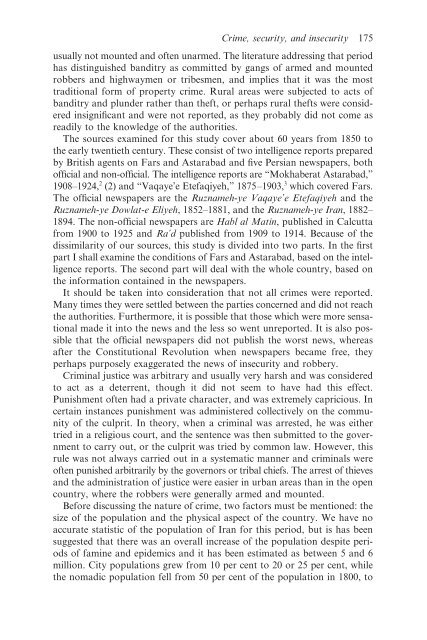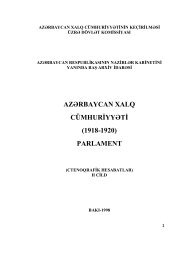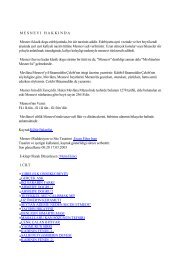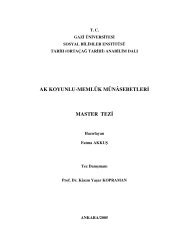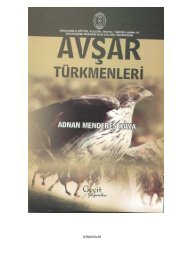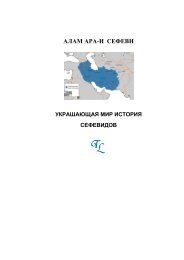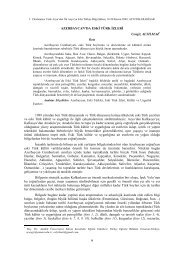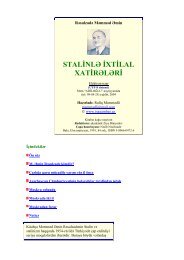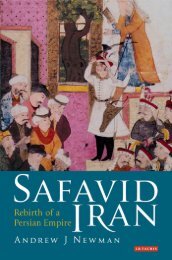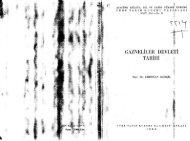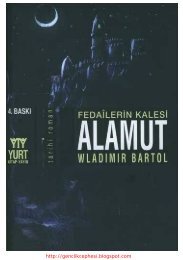War and Peace in Qajar Persia: Implications Past and ... - Oguzlar.az
War and Peace in Qajar Persia: Implications Past and ... - Oguzlar.az
War and Peace in Qajar Persia: Implications Past and ... - Oguzlar.az
- No tags were found...
Create successful ePaper yourself
Turn your PDF publications into a flip-book with our unique Google optimized e-Paper software.
Crime, security, <strong>and</strong> <strong>in</strong>security 175usually not mounted <strong>and</strong> often unarmed. The literature address<strong>in</strong>g that periodhas dist<strong>in</strong>guished b<strong>and</strong>itry as committed by gangs of armed <strong>and</strong> mountedrobbers <strong>and</strong> highwaymen or tribesmen, <strong>and</strong> implies that it was the mosttraditional form of property crime. Rural areas were subjected to acts ofb<strong>and</strong>itry <strong>and</strong> plunder rather than theft, or perhaps rural thefts were considered<strong>in</strong>significant <strong>and</strong> were not reported, as they probably did not come asreadily to the knowledge of the authorities.The sources exam<strong>in</strong>ed for this study cover about 60 years from 1850 tothe early twentieth century. These consist of two <strong>in</strong>telligence reports preparedby British agents on Fars <strong>and</strong> Astarabad <strong>and</strong> five <strong>Persia</strong>n newspapers, bothofficial <strong>and</strong> non-official. The <strong>in</strong>telligence reports are “Mokhaberat Astarabad,”1908–1924, 2 (2) <strong>and</strong> “Vaqaye’e Etefaqiyeh,” 1875–1903, 3 which covered Fars.The official newspapers are the Ruznameh-ye Vaqaye’e Etefaqiyeh <strong>and</strong> theRuznameh-ye Dowlat-e Eliyeh, 1852–1881, <strong>and</strong> the Ruznameh-ye Iran, 1882–1894. The non-official newspapers are Habl al Mat<strong>in</strong>, published <strong>in</strong> Calcuttafrom 1900 to 1925 <strong>and</strong> Ra’d published from 1909 to 1914. Because of thedissimilarity of our sources, this study is divided <strong>in</strong>to two parts. In the firstpart I shall exam<strong>in</strong>e the conditions of Fars <strong>and</strong> Astarabad, based on the <strong>in</strong>telligencereports. The second part will deal with the whole country, based onthe <strong>in</strong>formation conta<strong>in</strong>ed <strong>in</strong> the newspapers.It should be taken <strong>in</strong>to consideration that not all crimes were reported.Many times they were settled between the parties concerned <strong>and</strong> did not reachthe authorities. Furthermore, it is possible that those which were more sensationalmade it <strong>in</strong>to the news <strong>and</strong> the less so went unreported. It is also possiblethat the official newspapers did not publish the worst news, whereasafter the Constitutional Revolution when newspapers became free, theyperhaps purposely exaggerated the news of <strong>in</strong>security <strong>and</strong> robbery.Crim<strong>in</strong>al justice was arbitrary <strong>and</strong> usually very harsh <strong>and</strong> was consideredto act as a deterrent, though it did not seem to have had this effect.Punishment often had a private character, <strong>and</strong> was extremely capricious. Incerta<strong>in</strong> <strong>in</strong>stances punishment was adm<strong>in</strong>istered collectively on the communityof the culprit. In theory, when a crim<strong>in</strong>al was arrested, he was eithertried <strong>in</strong> a religious court, <strong>and</strong> the sentence was then submitted to the governmentto carry out, or the culprit was tried by common law. However, thisrule was not always carried out <strong>in</strong> a systematic manner <strong>and</strong> crim<strong>in</strong>als wereoften punished arbitrarily by the governors or tribal chiefs. The arrest of thieves<strong>and</strong> the adm<strong>in</strong>istration of justice were easier <strong>in</strong> urban areas than <strong>in</strong> the opencountry, where the robbers were generally armed <strong>and</strong> mounted.Before discuss<strong>in</strong>g the nature of crime, two factors must be mentioned: thesize of the population <strong>and</strong> the physical aspect of the country. We have noaccurate statistic of the population of Iran for this period, but is has beensuggested that there was an overall <strong>in</strong>crease of the population despite periodsof fam<strong>in</strong>e <strong>and</strong> epidemics <strong>and</strong> it has been estimated as between 5 <strong>and</strong> 6million. City populations grew from 10 per cent to 20 or 25 per cent, whilethe nomadic population fell from 50 per cent of the population <strong>in</strong> 1800, to


